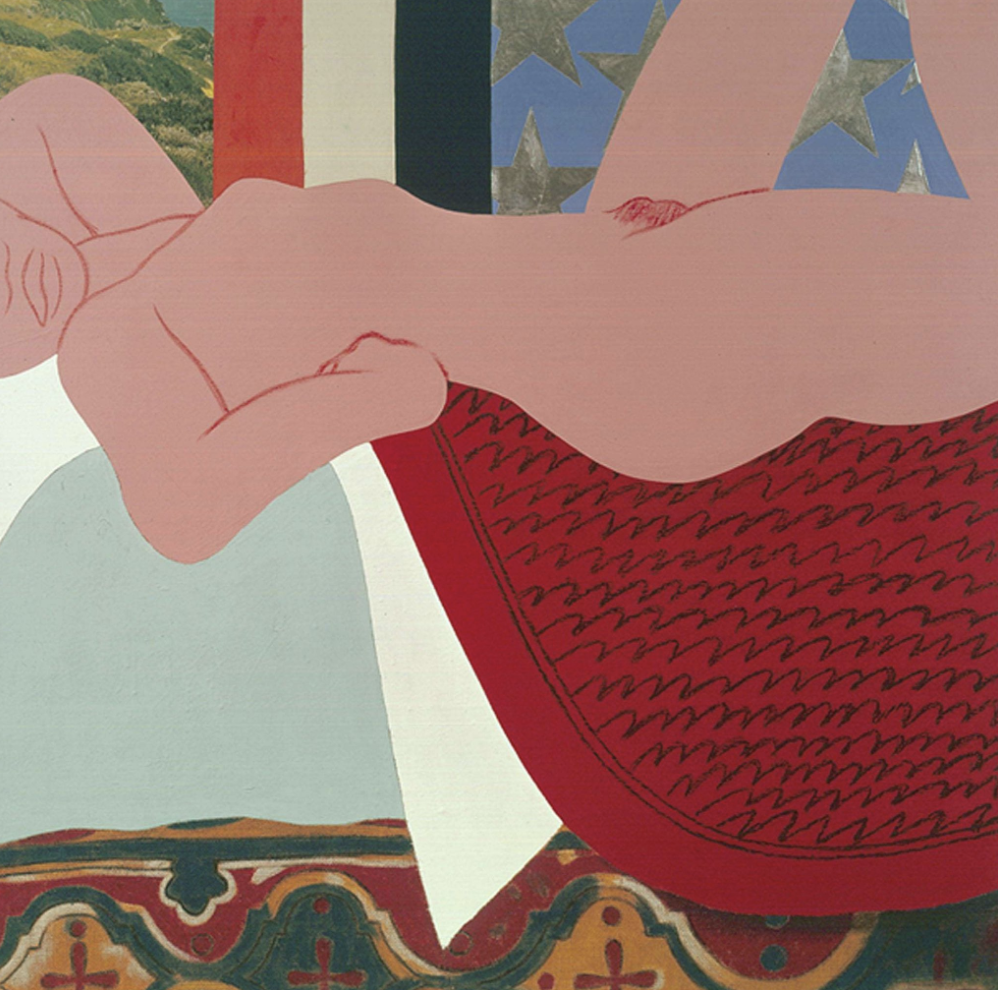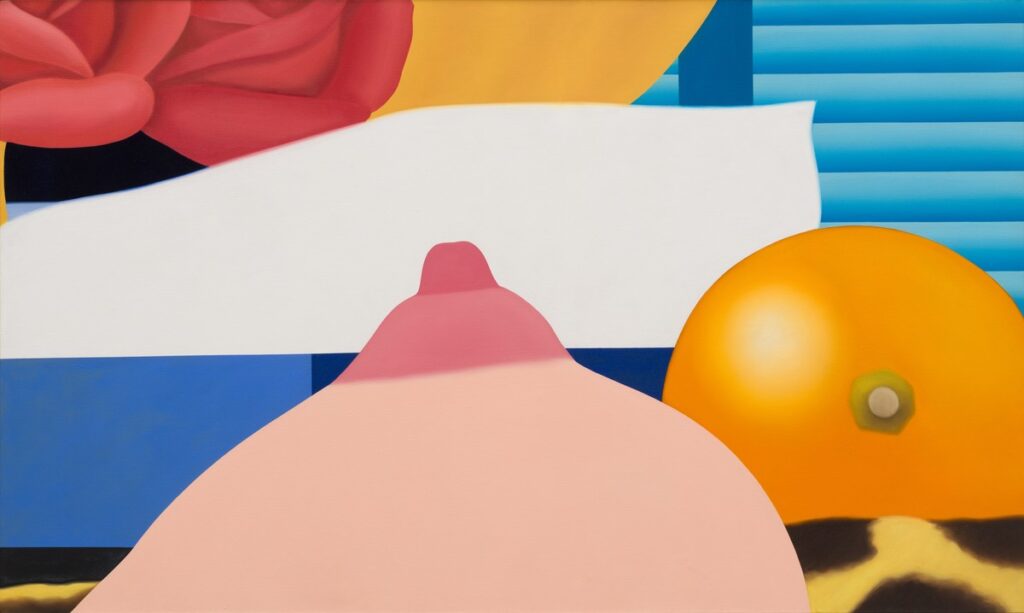Masterpiece Story: Once Upon a Time by Keith Haring
Keith Haring’s Once Upon a Time mural is a 4-walled orgiastic display of penises, eager orifices, splashing ejaculate, and extended tongues tangled...
Theodore Carter 15 June 2025
Tom Wesselmann rose to prominence during the Pop Art movement, though he rejected the label himself. While many Pop artists used familiar objects to question consumer culture, Wesselmann chose a different path. He focused purely on visual beauty, not criticism. His bold compositions and striking colors set him apart. So, what made this artist truly groundbreaking?
Tom Wesselmann began his career sketching cartoons before turning to fine art. His early experiments with collage and bold composition laid the foundation for his later style. A vivid dream, where he saw the phrase “red, white, and blue” repeated, sparked a turning point. That vision inspired The Great American Nude, a series defined by patriotic colors—red, white, blue, gold, and khaki. The works featured American landscapes and iconic portraits, including the Founding Fathers. Wesselmann used torn posters, magazine clippings, and photography to build layered collages. These materials pushed him to work on a larger scale. Eventually, he approached billboard companies directly to accommodate his growing ambition.

Tom Wesselmann, The Great American Nude #1, 1961, private collection. Wildenstein Plattner Institute.
In the late 1960s, Tom Wesselmann began the Bedroom Paintings series, which continued into the early 1980s. These works explored isolated parts of the female nude—such as a hand, foot, or breast—set against intimate bedroom objects like light switches, flowers, and curtains. Drawing from his earlier Great American Nude, Still Lifes, and Seascapes, Wesselmann shifted focus to the tension between figure and object. In this series, everyday items gained unexpected visual weight. Though smaller than the nude elements, they often dominated the composition through sharp contrasts. The result is both sensual and restrained, highlighting Wesselmann’s mastery of balance and visual rhythm.

Tom Wesselmann, Bedroom Painting #4, 1968. Gagosian.
Smoker #5 stands out as a bold example of Tom Wesselmann’s signature Mouth paintings—an iconic element of American Pop Art. Created in 1969, it marked a shift from his earlier nude works and became part of the Smoker series, which began in 1965. The painting features the lips of Wesselmann’s friend, Peggy Sarno, rendered with graphic clarity. A cigarette, positioned between the vivid red lips, serves as both a focal point and a cultural symbol.
In post-war American imagery, the cigarette embodied seduction, sophistication, and consumer allure. Wesselmann captured that with sharp, sensual precision. The rising smoke blurs the edges, evoking mystery and desire. The result blends glamour with critique, drawing from the visual language of mid-century advertising. With this work, Wesselmann expanded Pop Art’s vocabulary while refining his own visual voice.

Tom Wesselmann, Smoker #5 (Mouth #19), 1969. Mutual Art.
In 1962, as Pop Art gained momentum, Tom Wesselmann found himself grouped within the movement, despite his resistance to the label. While others used consumer imagery to critique mass culture, Wesselmann pursued pure visual pleasure. Around this time, he began a new series of still lifes, experimenting with collage and assemblage techniques.
One striking example stretches nearly 26 feet (8 meters) wide. In it, oversized sunglasses frame objects like lipstick, nail polish, and jewelry. These elements form a vivid portrait of modern femininity. Wesselmann magnified the ordinary, elevating domestic symbols to a monumental scale. The result is both playful and commanding, turning the everyday into something unforgettable.

Tom Wesselmann, Still Life #60, 1973. Gagosian.
In the early 1980s, Tom Wesselmann became captivated by a bold concept: transforming a drawing into steel. He imagined lines lifted from paper and placed directly onto a wall, appearing as if hand-drawn on the surface. At the time, laser-cutting technology couldn’t meet his vision. Determined, Wesselmann invested in developing the tools himself.
Once realized, the results were striking. He revisited familiar subjects—especially the nude—and reimagined them in metal. These pieces retained the fluidity of line while gaining the presence of sculpture. Each work merged drawing, industrial technique, and fine art into a seamless, wall-mounted illusion.

Tom Wesselmann, From Nude Painting Print, c. 1979–1991. DuMouchelles.
DailyArt Magazine needs your support. Every contribution, however big or small, is very valuable for our future. Thanks to it, we will be able to sustain and grow the Magazine. Thank you for your help!